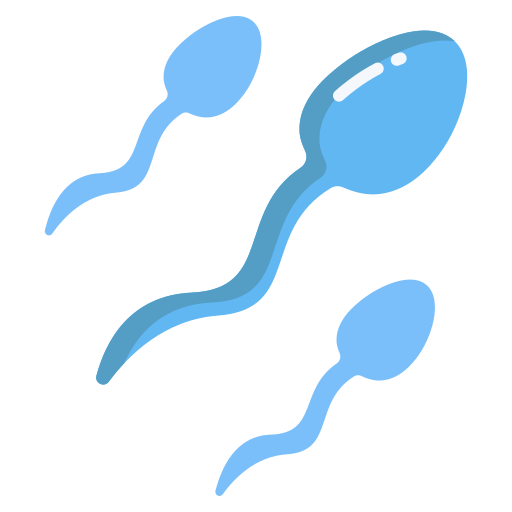What Conditions Are Ideal for Sperm Survival?


| Condition | Impact on Sperm Survival |
|---|---|
| Moist Environment | Sperm needs moisture to survive; drying out quickly renders sperm non-viable. |
| Body Temperature (~98.6°F / 37°C) | Sperm thrives at body temperature; exposure to extreme heat or cold outside the body shortens its lifespan. |
| Alkaline pH (Inside Female Body) | The alkaline environment during ovulation protects sperm and extends its viability up to five days. |
| Lack of Air Exposure | Exposure to air dehydrates sperm, reducing survival time to minutes or hours, depending on moisture levels. |
Sperm cells are resilient yet sensitive, needing specific conditions to survive and remain viable for fertilization. While sperm can live for days in optimal environments, other factors can reduce their lifespan quickly. Understanding the conditions that support sperm survival, both inside and outside the body, is essential for those trying to conceive. This article explores the ideal conditions that extend sperm viability and maximize their fertilization potential.
How Long Does Sperm Live in Different Environments?
The lifespan of sperm depends heavily on environmental factors. Here’s a quick overview of how long sperm can live in various environments:
- Inside the Female Body: Sperm can live up to five days in the female reproductive tract, particularly when cervical mucus is present to nourish and protect it.
- Outside the Body (On Surfaces): Sperm begins to die within minutes to a few hours when exposed to air or dry surfaces, as the lack of moisture and nutrients limits survival.
- In Water: Sperm survival in water, like in a pool or bath, is brief due to rapid dilution, temperature changes, and lack of optimal pH.
Ideal Conditions for Sperm Survival Inside the Female Body
The female reproductive system provides a nurturing environment for sperm, allowing it to live up to five days under ideal conditions. Here are the critical factors that help sperm thrive within the body:
- Fertile Cervical Mucus: Cervical mucus changes consistency during ovulation, becoming more slippery and alkaline, creating an ideal medium for sperm to move, survive, and reach the egg. This type of mucus nourishes and protects sperm, significantly extending their lifespan.
- Optimal pH Levels: The vaginal environment is typically acidic, which can be hostile to sperm. However, during ovulation, cervical mucus becomes more alkaline, balancing the pH to protect sperm as they travel through the reproductive tract.
- Temperature: Sperm function best at body temperature (around 98.6°F or 37°C). The internal environment maintains this stable temperature, creating an ideal condition for sperm viability.
Factors Affecting Sperm Survival Outside the Body
Outside the body, sperm cells are vulnerable to environmental changes, which drastically shorten their lifespan. Here are some factors that impact sperm viability on surfaces or in non-optimal conditions:
- Exposure to Air: Exposure to air dehydrates sperm quickly, causing them to lose mobility and die within minutes to a few hours. Sperm needs a moist environment to survive, and air exposure leads to rapid drying.
- Surface Type: Sperm survive longer on moist surfaces than on dry ones, as moisture can help extend their viability for a short time. However, most surfaces (like bedding, clothing, or skin) do not provide the necessary nutrients to sustain sperm for long.
- Temperature Fluctuations: Outside the body, fluctuations in temperature can quickly kill sperm. Colder or warmer temperatures outside of body temperature (98.6°F or 37°C) are unsuitable for sperm survival.
How Temperature Impacts Sperm Viability
Temperature plays a crucial role in sperm survival both inside and outside the body:
- Optimal Temperature (Body Temperature): Sperm is adapted to body temperature, which is around 98.6°F (37°C). Inside the reproductive tract, this stable temperature supports sperm motility and viability, giving it the best chance to reach and fertilize an egg.
- High Temperatures: Exposure to high temperatures, such as in hot tubs or saunas, can impair sperm quality and viability. Prolonged exposure to high heat may damage sperm DNA, affecting both motility and lifespan.
- Cold Temperatures: Sperm exposed to cold temperatures outside the body will lose function quickly. While sperm can be frozen and preserved under controlled conditions in medical settings, unregulated cold exposure damages cellular structure and renders sperm non-viable.
Conclusion
Sperm thrives best in specific, controlled environments, especially within the female reproductive tract, where temperature, pH, and cervical mucus create ideal conditions for survival. Outside the body, sperm cells face challenges that limit their lifespan significantly, including air exposure, temperature changes, and lack of moisture. Understanding these ideal conditions can aid in maximizing chances for conception and preventing misconceptions about sperm viability outside the body.
Contact Us if you have questions about fertility, conception, or factors that impact sperm survival. We’re here to provide helpful information and guidance on reproductive health.
FAQs
-
How long does sperm survive outside the body?
- Sperm generally dies within minutes to a few hours outside the body, depending on the surface and environmental conditions.
-
Can sperm survive in water, like in a hot tub or pool?
- Sperm doesn’t live long in water, as it’s quickly diluted, and temperature fluctuations make the environment unsuitable for survival.
-
What conditions are ideal for sperm inside the female body?
- Fertile cervical mucus, an alkaline pH, and a stable body temperature provide the ideal environment for sperm to survive up to five days.
-
Does exposure to air kill sperm immediately?
- While exposure to air dries sperm quickly, it may survive for a short time if moisture remains. However, it becomes non-viable within minutes to hours.
-
How does temperature affect sperm survival?
- Sperm survives best at body temperature. High or cold temperatures outside the body drastically reduce sperm viability.



